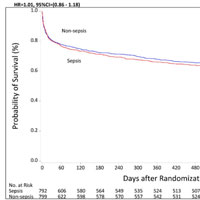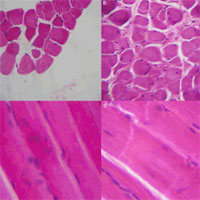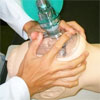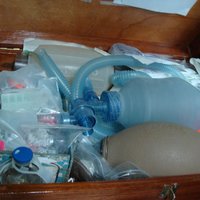Tag: study

Increasing the Number of Medical Emergency Calls Does Not Improve Hospital Mortality
With adjustment for patient factors, illness, and comorbidities, increased emergency calling rates were not associated with reduced in-hospital mortality. Efforts to increase calling rates do not seem warranted. We studied... read more

Health-related Outcomes of Critically Ill Patients With and Without Sepsis
Critically ill patients with sepsis have higher healthcare resource use and costs but similar survival and HRQoL compared to matched patients without sepsis. We conducted a primary propensity score matched analysis of patients... read more

Foleys Aren’t Fun: Patient Study Shows Catheter Risks
A new study puts large-scale evidence behind what many hospital patients already know: Having a urinary catheter may help empty the bladder, but it can hurt, lead to urinary tract infections, or cause other issues in the... read more

Evaluation of a strategy for enrolling the families of critically ill patients in research using limited human resources
Family members were recruited for more than one third of eligible patients, and >90% of approached consented to participate. There are important demographic differences between patients with vs without an enrolled family... read more

Presenting Symptoms Independently Predict Mortality in Septic Shock
More than one third of patients with septic shock presented to the emergency department with vague symptoms that were not specific to infection. These patients had delayed antibiotic administration and higher risk of mortality... read more

Decatecholaminisation during sepsis
While necessary and life-saving in the early fight or flight reaction to any insult, prolonged adrenergic stress is detrimental and contributes to organ dysfunction. In the largest trial to date, Morelli et al. enrolled septic... read more

Warfarin Nonadherence: What Factors Lead Patients with Afib to Discontinue?
Patients with atrial fibrillation (AF) frequently discontinue their warfarin therapy, and a recently-published study offers insight into factors that may contribute to nonadherence. The report, released in JAMA Cardiology,... read more

Peer Support in Critical Care
Peer support appeared to reduce psychologic morbidity and increase social support. The evidence for peer support in critically ill populations is limited. There is a need for well-designed and rigorously reported research... read more

New research shows why nutrition should be back on the table for surgical patients
More than 48 million people in the U.S. undergo surgery each year, and for decades the focus has been on making sure patients do not consume any food or drinks in the hours leading up to the surgery. Yet, 1 in 3 patients... read more

Acute Skeletal Muscle Wasting in Critical Illness
Among these critically ill patients, muscle wasting occurred early and rapidly during the first week of critical illness and was more severe among those with multiorgan failure compared with single organ failure. These findings... read more

Rapid Sequence Intubation With Video Laryngoscopy Common for Difficult Airways
Predicted difficult airways in one emergency department are managed most often using rapid sequence intubation (RSI) and video laryngoscopy (VL), a recent study has found. Although difficult airways occur frequently in emergency... read more

Pressure ulcers in ICU patients: Incidence and clinical and epidemiological features
Pressure ulcers in ICU patients: Incidence and clinical and epidemiological features: A multicenter study in southern Brazil. The main objective is to evaluate the incidence and risk factors of pressure ulcers (PU) in adult... read more

Tracheal extubation with a predicted difficult airway
Management of the difficult airway is an important, but as yet poorly-studied, component of intensive care management. Although there has been a strong emphasis on prediction and intubation of the difficult airway, safe extubation... read more

Utility of Adjunct Antibiotics After I+D – Systematic Review + Meta-Analysis
Skin and soft tissue abscesses are a common emergency department (ED) presentation. The approach to management has changed little in recent decades: incision and drainage (I+D) and then discharge home with follow up. However,... read more








